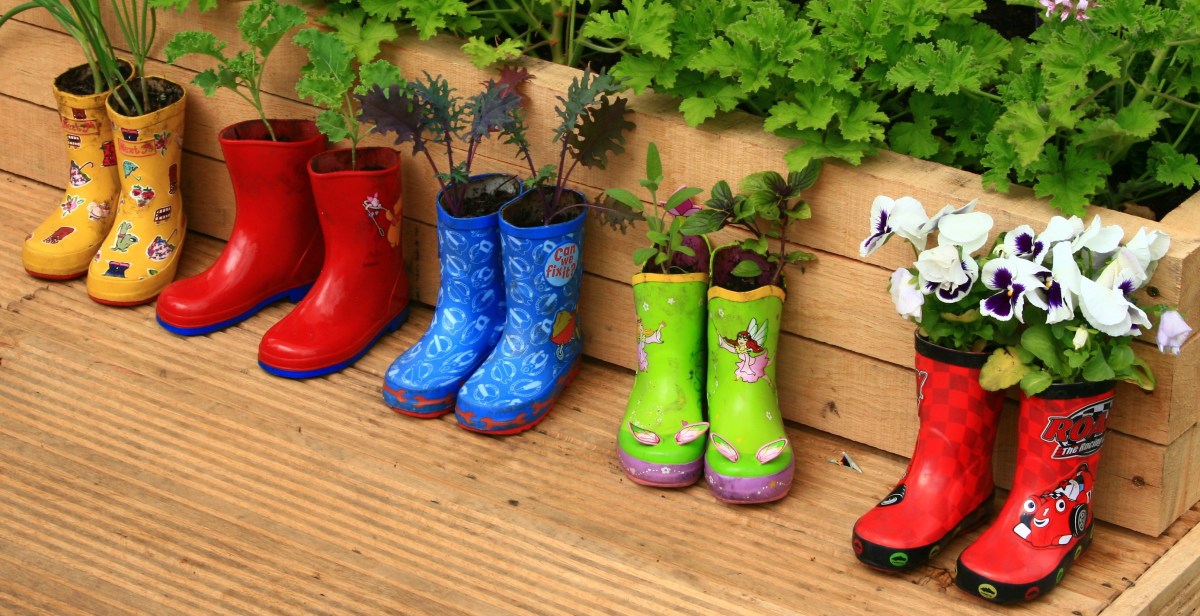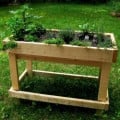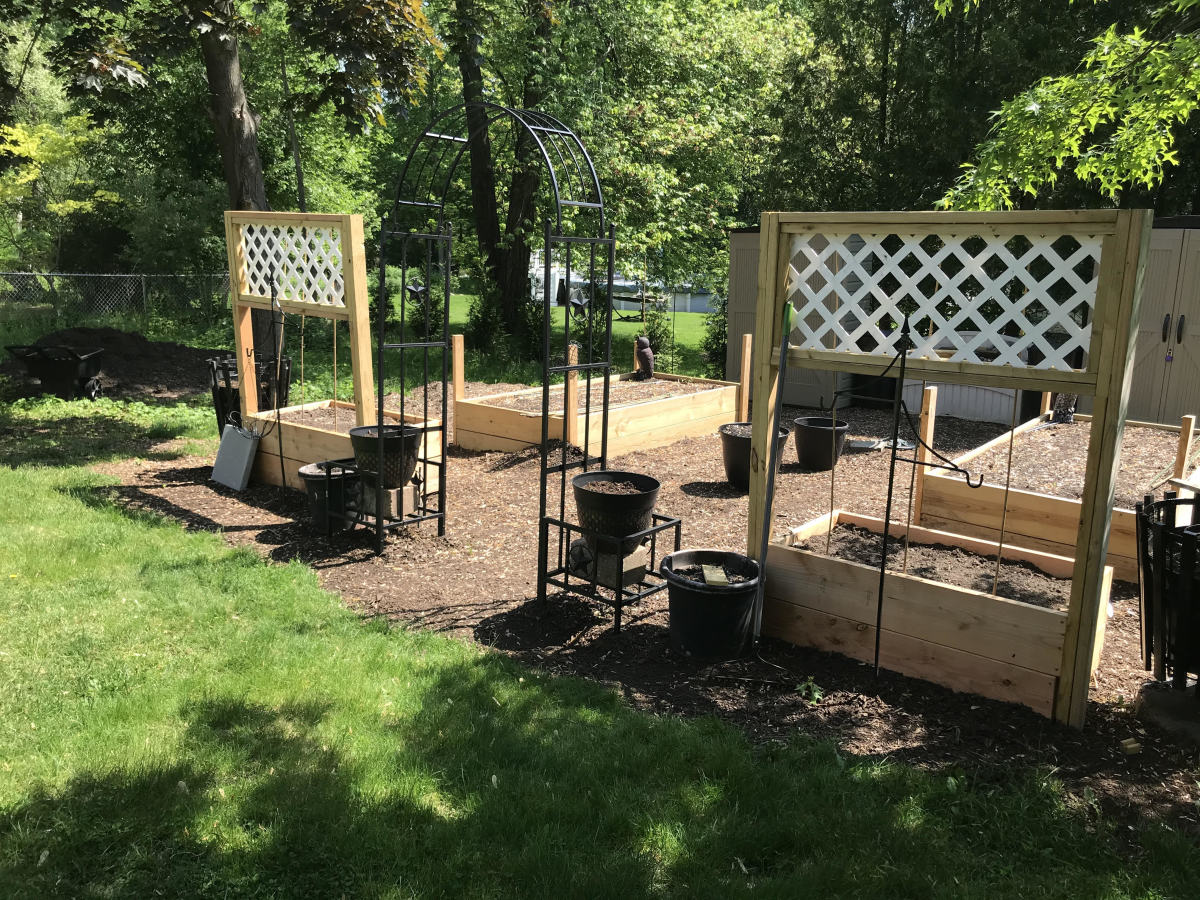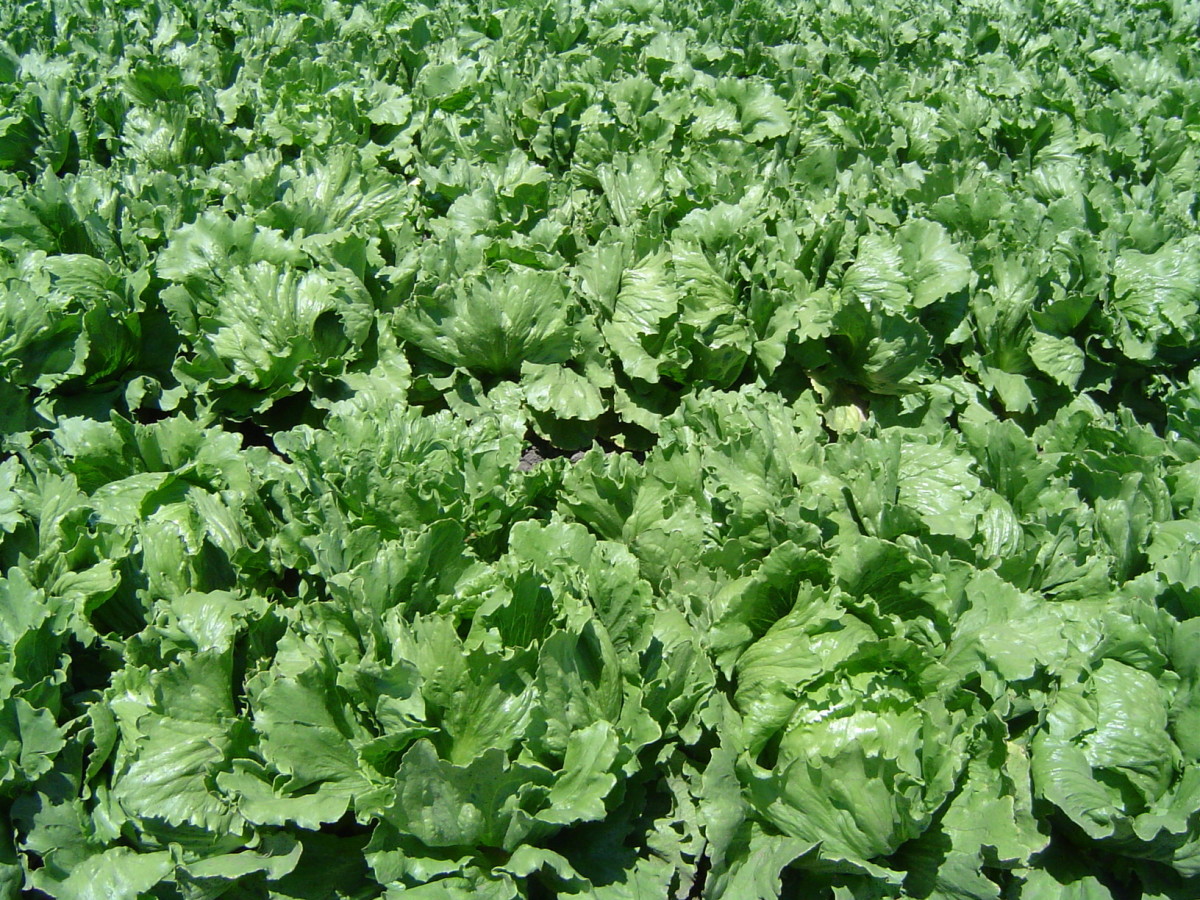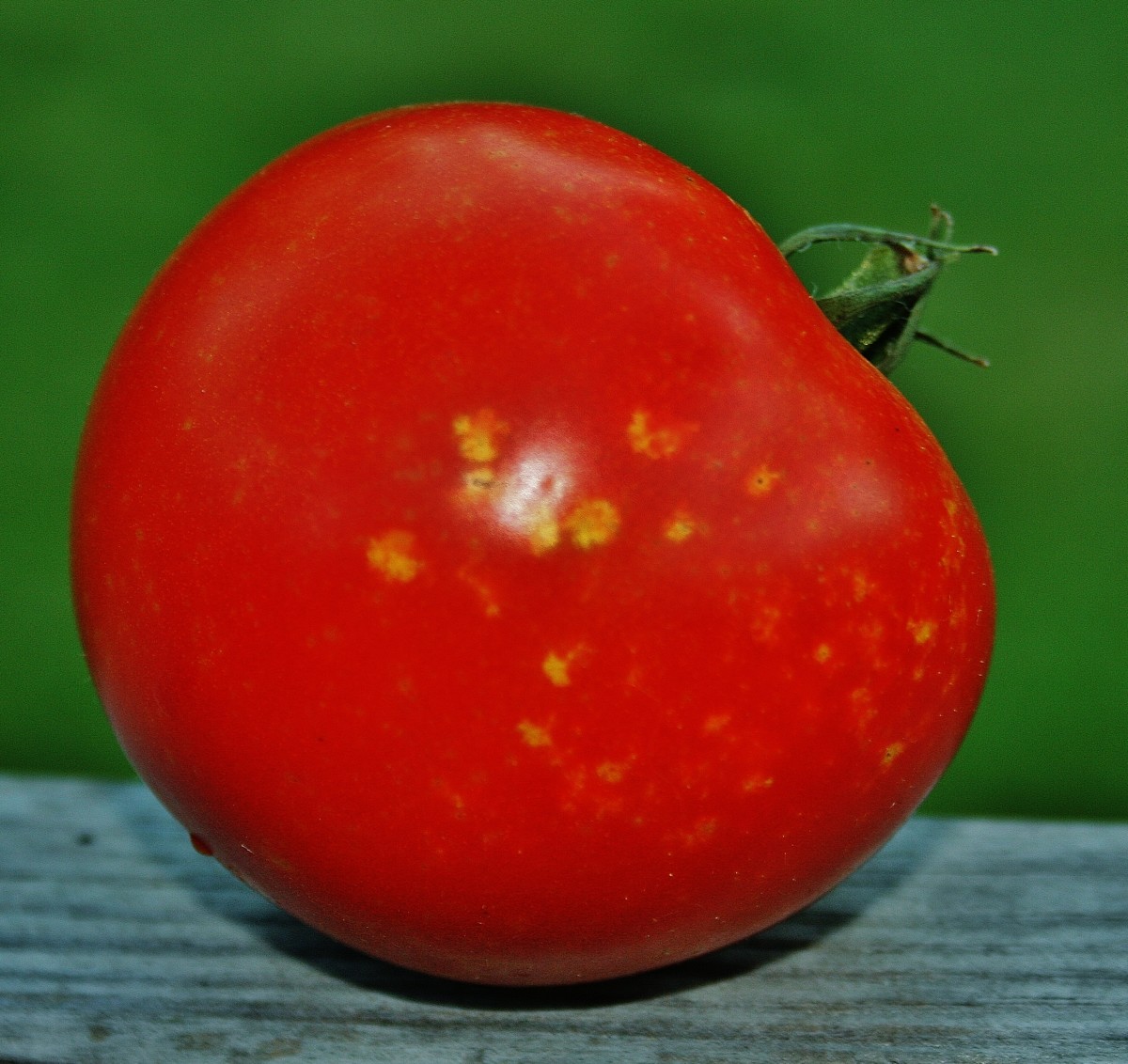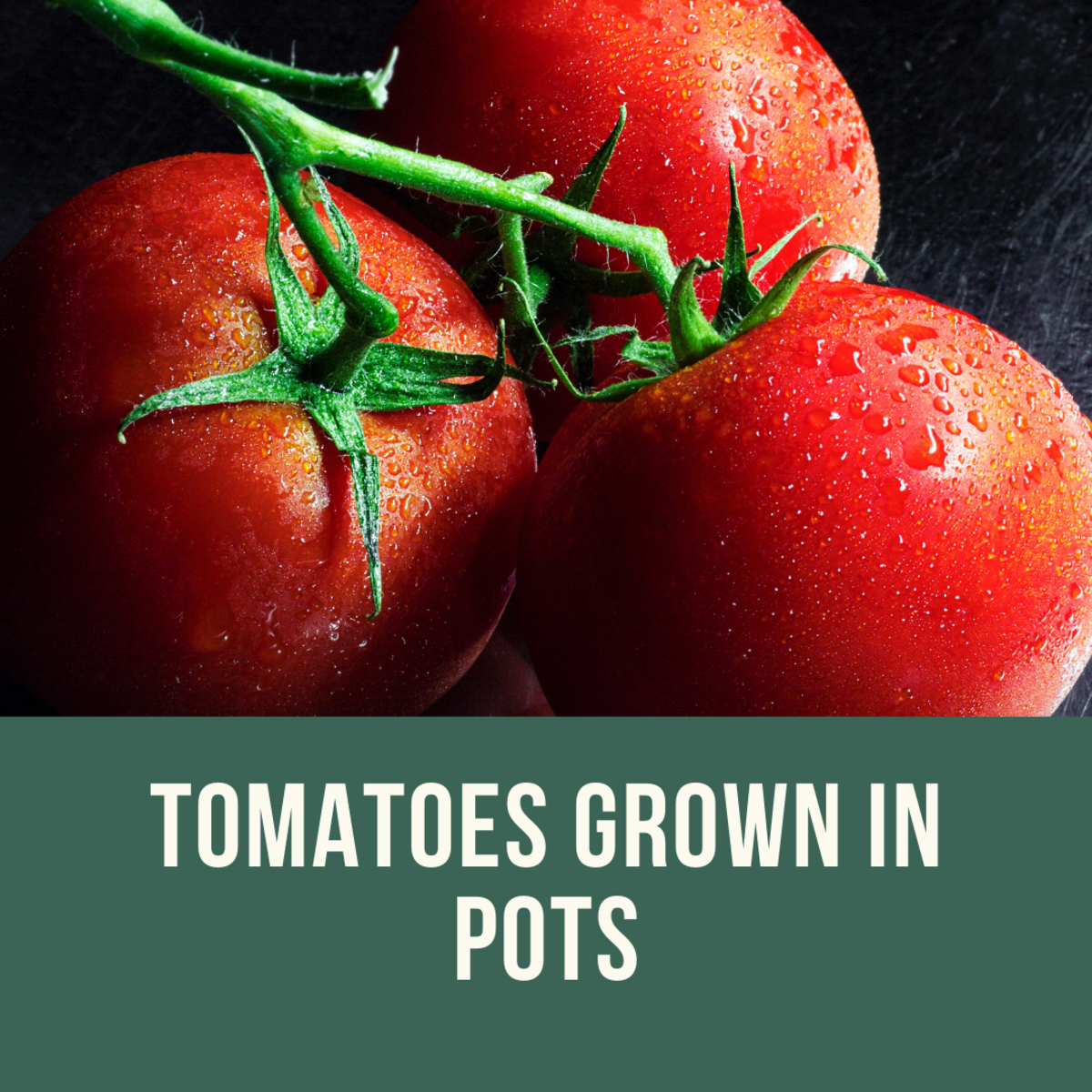- HubPages»
- Home and Garden»
- Gardening»
- Planting Vegetables
Gardening, Is A Way of Life!
My First Garden In My New House
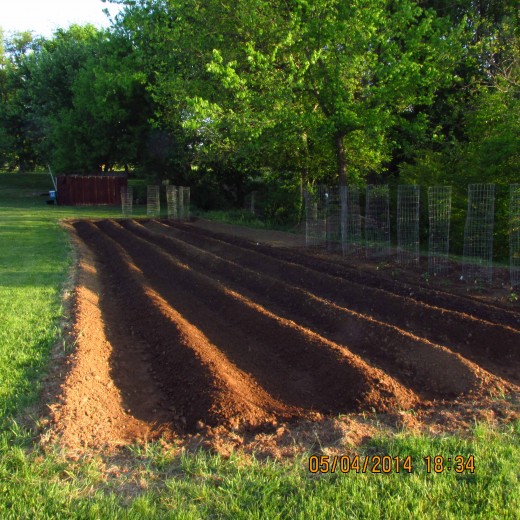
Fresh Tomatoes
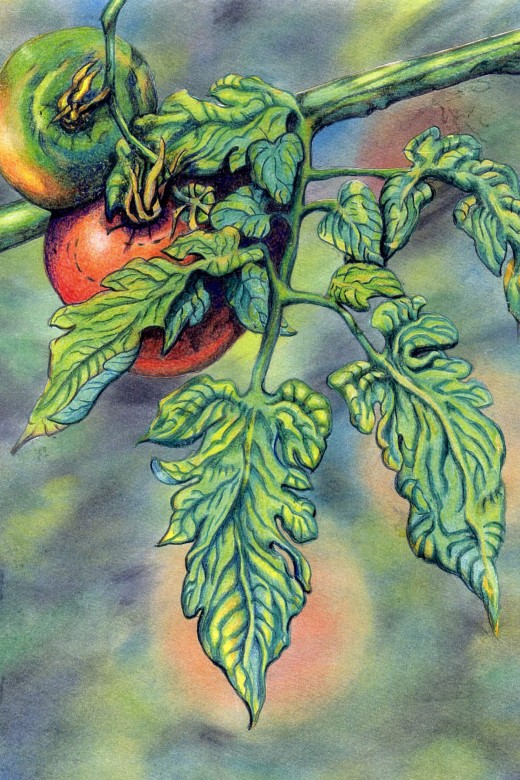
The Back Of My House
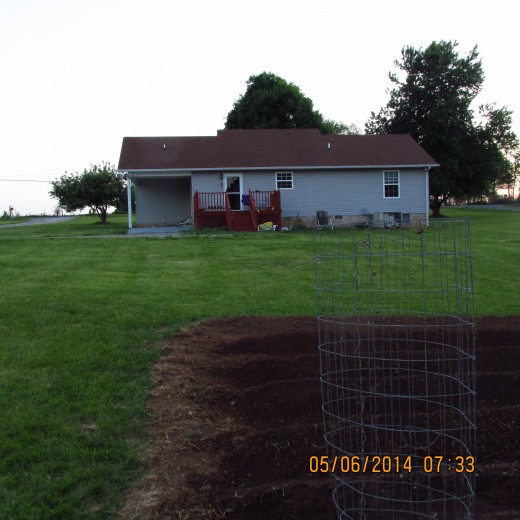
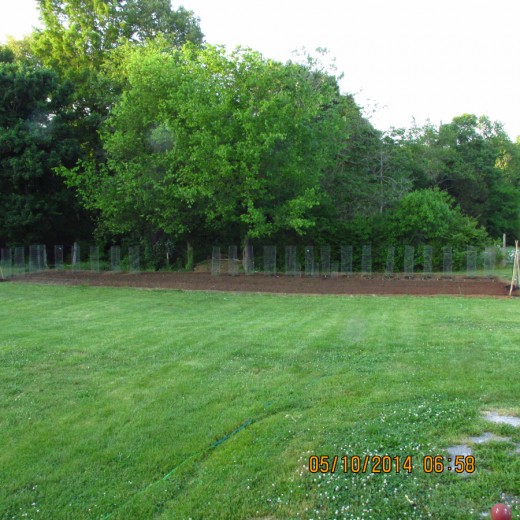
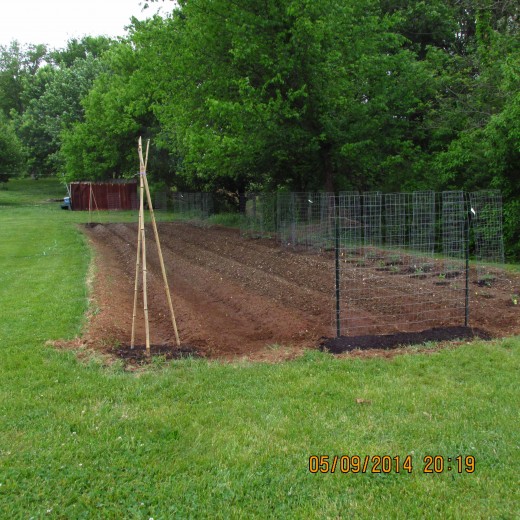
Gardening
I started my first garden twenty years ago, because my girlfriend at the time wanted to learn how to make her own salsa. I suggested that we could grow all the ingredients in the small strip of ground between the fence and the side of the house, no more than ten feet wide by twenty feet long. Since then Gardening, Is A Way Of Life has become my routine in the early spring, long after our relationship soured and we went our separate ways. This article Gardening, Is A Way Of Life will share with my readers some of the most basic tips for starting and maintaining a garden just about anywhere.
The first step you must consider is location, what area of your yard gets the most sunlight but also allows for water from rainfall to naturally drain to it. This means that usually the lowest area of your yard that isn't blocked from receiving good natural light would be ideal.
The next step you must considered is soil, is this location, in an area that doesn't have any underground cables or pipes and is the soil good for growing plants? This important because to prepare the soil, one must turn the earth and break it up so that seeds can be planted and roots can easily spread. You can always enrich the soil and add too it and I always give my soil a treatment of manure in the spring before planting and sometimes in the fall afterwards.
Now I personally don't fret over the PH of the soil or if it has the correct parts of sand, manure or top soil. To me its about what feels right, now don't get me wrong some plants prefer certain types of soil and conditions to grow and I will research and learn about these to maximize the plants growth but I don't get uptight and anal if things don't go according to plan . . . in other words most of the time I wing it.
My first garden, because it was so small, I turned the earth myself with a shovel, of course I was much younger and didn't have a roto-tiller and it wasn't that difficult. However with larger gardens roto-tilling is the way to go. Roto-Tillers come in various sizes and prices and can be anywhere from $200.00 up into the thousands. My roto-tiller only cost about $300 dollars but I made sure to pay for the three-year warranty because you just never know, so in reality it cost $350.00.
I will show pictures of my garden in various stages of completion to the right. What is important to realize is that a garden is always in various stages of completion and is never finished, it is like a journey not a destination so enjoy the process. So you don't have to get everything done in one day. If you pace yourself and set goals then you will enjoy the process much more.
I really enjoy watching the progress I make as my garden springs into life, little by little. The most important thing anyone should remember is that gardening is a learning experience and if we are willing to remain teachable will always learn more and grow right along with the plants that we sow. For instance this year I built two raised beds with a friend of mine, as an experiment, to see how they would do. I put one in all day sunlight and one that is mostly in the shade.
Because I have never used raised beds, I consider them an experiment and may have made some mistakes with the type of plants I put in them, we shall see. Putting a cucumber plant in the one in the sunlight all day in the photo below, may have been a mistake because they have a tendency to spread out. Also putting squash and zucchini plants in the raised bed in the shade may have also have been a mistake due to the same reasons but hey live and learn, I always say.
Raised Bed in the Sun
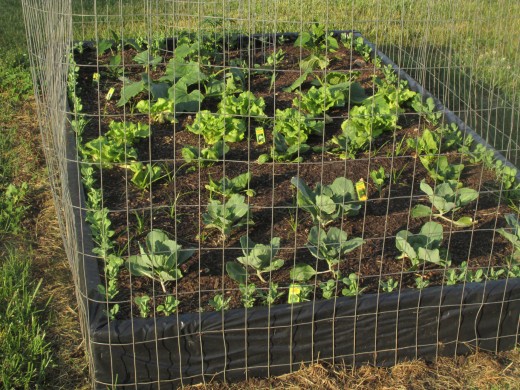
Nibiru The Cat Handles the Supervision
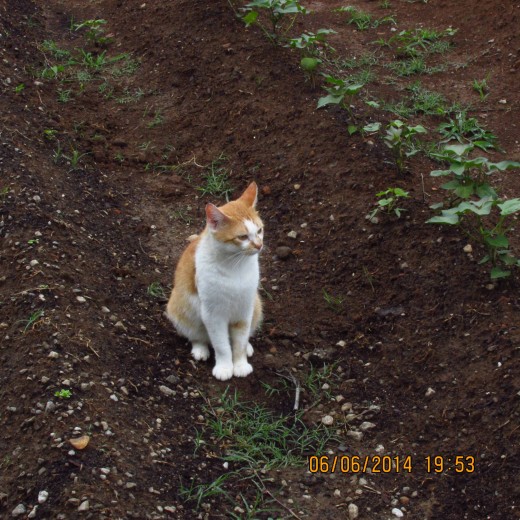
Nibiru The Cat
Nibiru the Cat, is always willing to get involved and do the supervising and take make sure I'm meeting his strict guidelines. His main contribution is critter control, I have never had a problem with rabbits or birds. As matter of fact the first year he caught and ate a rabbit while I was doing yard and garden work nearby. I tried to get a better look at his prize and he told me in no uncertain terms that he was not willing to share, he ate the whole rabbit on the spot.
Since then rabbits don't hang around much anymore and he keeps the birds busy as well, although I have never seen him catch a bird, lizards and snakes are on the menu. He also contributes by inspecting and keeping the equipment clean . . . if you know what I mean (see picture below)?
Inspecting The Equipment
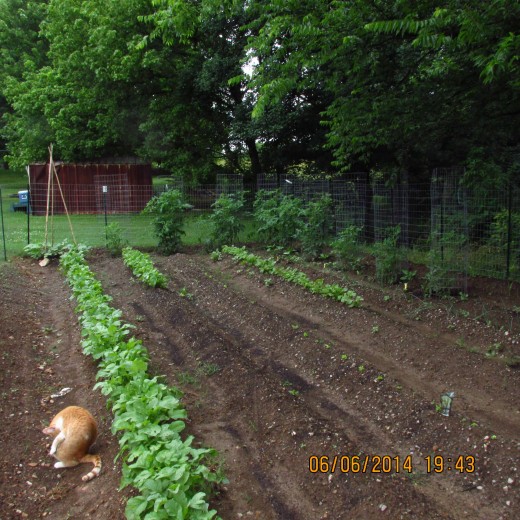
Raised Bed In The Shade
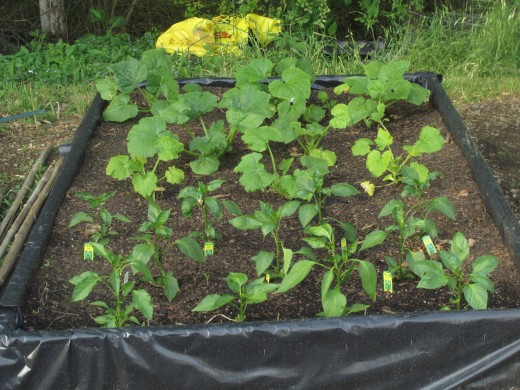
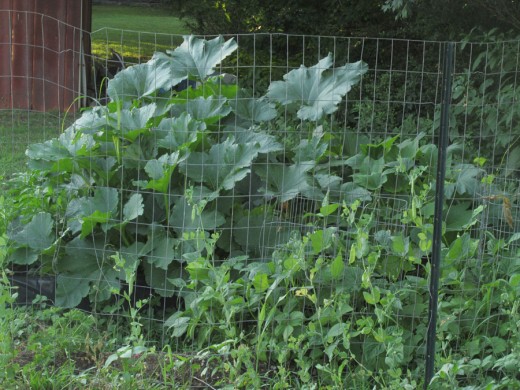
Raised Beds
Taking a friends suggestion, I decided to build my raised beds from treated 2"X10"s, eight feet long each, this cut down on expenses and allowed me to create each bed from three boards. I simply cut one board in half, as my end pieces and used drywall screws to fasten them together. Once I had them built, I placed them in the spots I wanted them and tapped them down into the ground to show their respective positions on the ground them removed them.
I then roto-tilled the ground where they would be place and removed any large rocks or sod and raked the loose soil smooth. I then placed the beds back into position and lined them inside and out with thick black plastic and stapled it to the boards. I did not cover the ground inside the beds completely with the plastic and only went into the bed area about a foot or so all the way around. My thinking was I wanted the soil to be able to drain naturally and didn't want excess moisture to become trapped.
It is my understanding that the plastic will serve two purposes, protect the boards from weather and rain and also prevent some insects (such as slugs) from crawling up the sides and getting into the raised beds, we shall see if this is true on both accounts.
I then took the compost from both my mobile storage containers and dumped them in each one. The amount was perfect as they covered the inside area all the way around about 4 inches deep, the smell was a little tough to take but I'm sure my plants will love it. I then filled up the rest of the raised beds with a combination of top soil and Black Cow manure, I think it took ten bags each to fill, each raised bed.
In the raised bed in the sun I stapled and nailed wire fencing all the way around to use as supports for the peas that I planted but this might also be a mistake as it will be much harder to weed. In this bed I planted spinach, lettuce and cabbage, two japalenos, two cucumber plants and one tomato plant, it should be interesting to see how this works out.
In the raised bed in the shade I planted zucchini's, squash and various pepper plants and have a feeling the zucchini's and squash may grow outside the bed but I left a lot of room around it anticipating this . . . we shall see. It will be interesting to note the difference in how the plants react to the isolation, lack of competition for growing space, soil composition and sunlight.
It's important to remember that gardening is a time consuming process and plants don't just blossom overnight, so just as creating compost takes time so too does the fruits of your labor. The key is proper and regular maintenance, such as watering, weeding and occasionally adding fertilizer. Not all of your plants will grow like the others so sometimes you need to give the ones that aren't doing as well special attention. I try not to use Miracle Grow but sometimes plants just need an extra boost to help them so don't be afraid to try something new or different to help them.
Try to think long term and plan ahead, in that regard start your compost heaps now so that you can add the pulled weeds and other natural parts of your yard or vegetable clippings to them for next year. Gardening, Is A Way Of Life for me but it wasn't always this way, it has been a long learning process and very spiritual experience.
Compost Heap
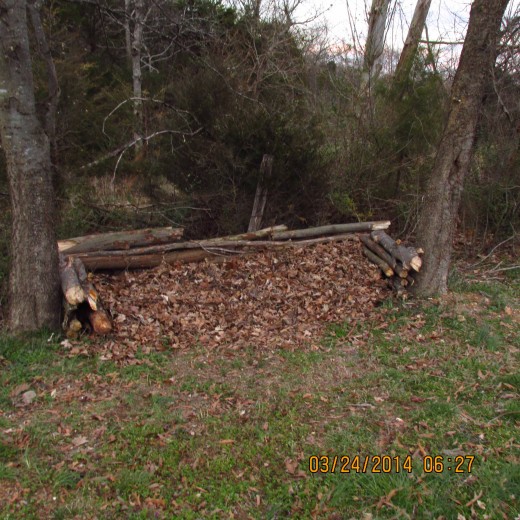
Compost Heap Grows
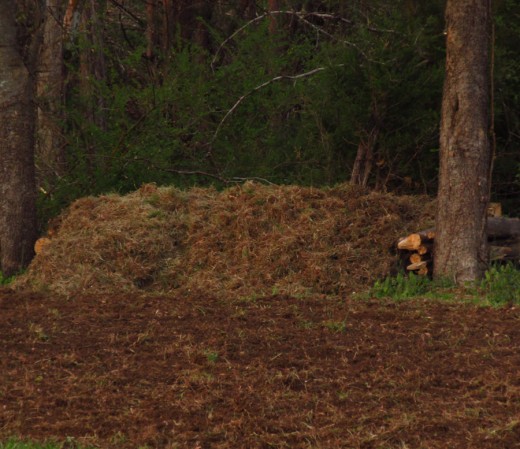
Compost
I don't know how most people create their compost but I have four compost containers. I have one big one right next to my garden that I put just about anything in, from plants and weeds to twigs, branches, leaves and grass-clippings. I try to break everything down as much as possible but this big one is for the long term, the other three are for yearly use.
One is a very big plastic container that is usually used for water run-off but I have cut the top off of it, use a piece of plywood to cover it and have situated it near my garden. This one is stationary and is also more for long term, that I use every two to three years. I will put all the dead plants from each years garden in this one with some soil and manure.
The other two are plastic containers with lids, that most people would use for storage containers, that I keep in my car port. I have drilled holes in them to allow them to breathe and use these to put all the clippings from vegetables I eat during the winter. Occasionally I will add some manure or top soil to these to help them decompose and cut down on the smell. These two are mobile but heavy and I used them this year as the base for both my raised beds.
I fill these two with all the excess plant matter from all the vegetables I eat. I keep a couple of coffee containers with lids near my stove and sink and fill them each night with various clippings. I also put coffee grounds in them, when they fill up I dump them into my two containers. These two compost containers usually fill up before next spring so that's when I add to the big plastic container near my garden.
I never put any meat products in my compost, the plants in my garden aren't meat eaters and so I don't treat them as if they are.
Creating this kind of compost cuts down on trash, recycles my plants and helps the environment by not adding to landfills. Almost everything including orange peels, avocado skin and melon rinds will breakdown by the time you are ready to use it. I would advise keeping a lid on it as it will prevent critters from getting into them and creating a mess and cut down on the smell.
Radishes
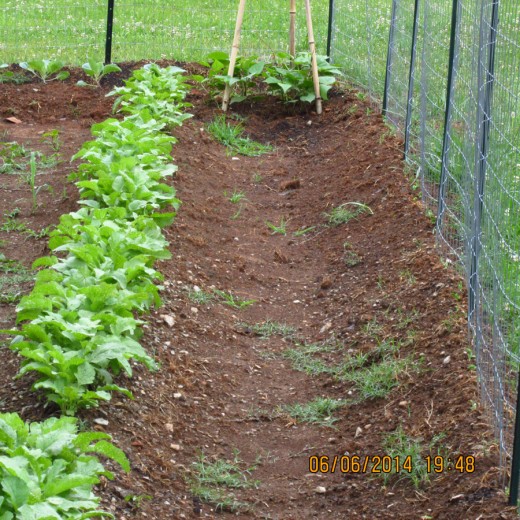
Freshly Tilled
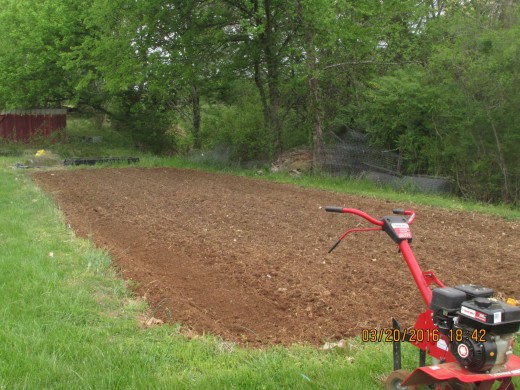
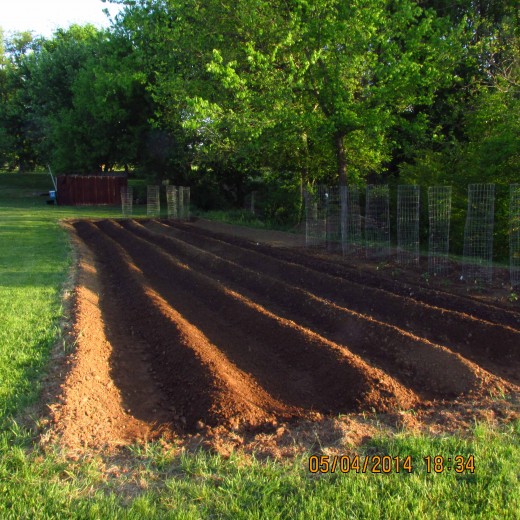
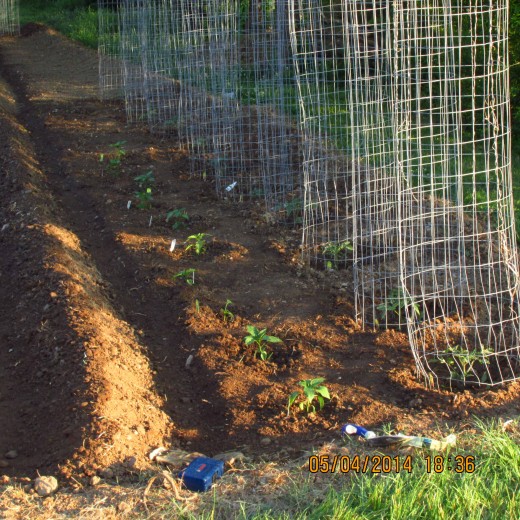
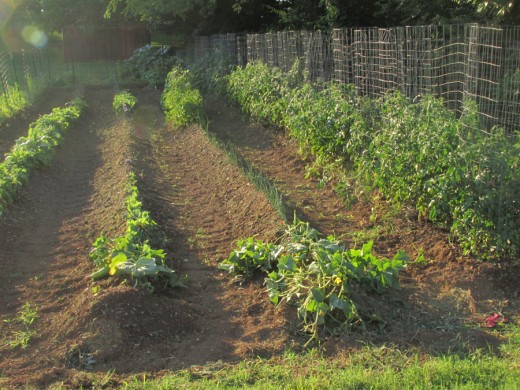
Planting and Seedlings
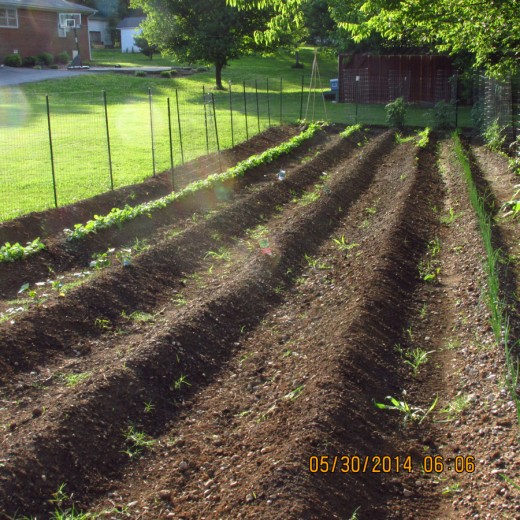
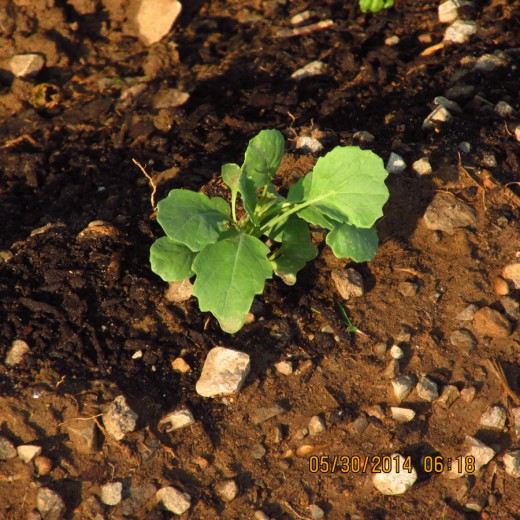
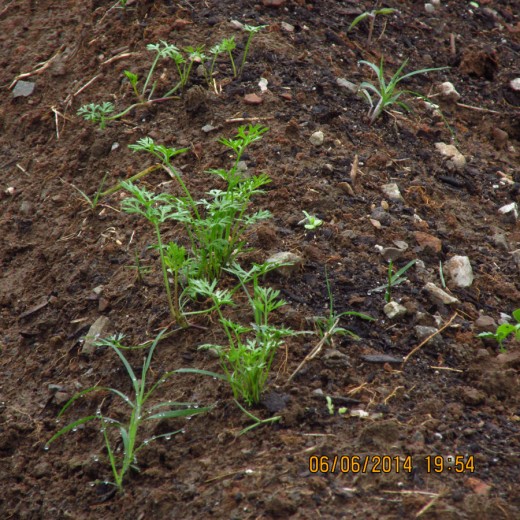
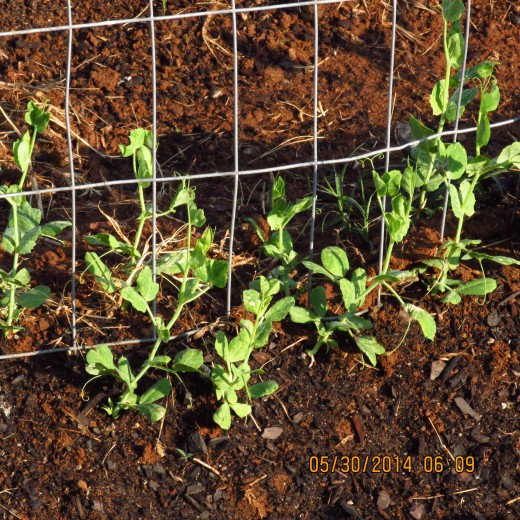
The Way I Do It
The way I do it is to roto-till the garden in March and to keep tilling it as many times as I can up to the time I plant, which is the second week in April. One year we had really nice weather in March and I planted too early and along came a snow in April and killed many of my plants, that was a costly lesson.
I grow tomatoes and peppers and other plants indoors most years, so that I don't have to buy them but most plants aren't that expensive and usually the Co-op in town has really good prices, or Lowes or Wal-Mart and I also know a few neighbors that sell inexpensive plants and I like to support their efforts and buy from them as well.
Roto-tilling can be hard work but is nothing compared to raking out the rocks and creating rows. I create rows wide enough apart so that I can run the roto-tiller between them when the weeds start showing up, it makes pulling them easier.
My boss asked me one time "Why don't you just use pesticides for your weeds?" and I told her "That kind of defeats the whole reason for growing your own garden, if I want that, I can just go to the grocery store, besides exercise is good for you."
The best time to pull weeds is right after a rain, because the ground is soft and you can pull most weeds up by the roots. Of course you will get muddy but hey, that is what the shower is for . . . right? I just get down on the ground and and get dirty, I don't like bending over and killing my back but everyone has their own method. Sometimes I bring a spade with me but most of the time I just use my hands.
After tilling my garden in late March and early April, I then begin the backbreaking job of raking and hoeing the rows. I have learned to make the rows wide enough so that I can roto-till in between them periodically to break up the soil and make pulling weeds much easier.
When I first created my new garden I bought 200 dollars worth of topsoil and manure, delivered by truck and had them dump it on my freshly tilled garden. Of course this required that I spread the new soil evenly over the garden area. I then roto-tilled the garden again before starting my rows.
I always put the plants that grow tall, such as tomatoes that can grow six feet or taller, on the back row with plants that descend in height towards the front. The first year I had four green been stations in the corners, where I used a tripod of cane poles to allow them to grow up on. The second year, I just had the green beans in a row and that seemed to work out better. This year I'm growing a different variety of green beans and am using half sized cages for them instead of cane poles but will have more plants.
I always put a fence around my garden, not so much to discourage critters (that's Nibiru's job) but to allow my peas a place to climb. Eating garden fresh peas straight off the vine is something I truly enjoy. I don't even bother taking them out of the shells, just eat the whole thing and my they are good. Radishes grow very well in Tennessee and require very little maintenance, as well as shallots and green onions, so I always plant plenty.
Most of the plants in my garden are from seed, whether I start them inside or not, occasionally I will buy some tomato plants and peppers but most everything is from seed. One helpful hint is too thin your radishes sprouts, as this will allow each individual plant to mature and not compete with its neighbor, in the long run you will get a bigger crop by thinning them because if they are jammed together some will go to seed.
When I transplant I make sure the hole is much bigger than the root ball and I always add some Black Cow (manure) to the hole to help provide some nourishment for all new seedlings or immature plants. It is important to water any newly transplanted vegetables and seedlings however I rarely let my garden go more than two days without watering. In Tennessee, our Springs are pretty wet so, this is not so problematic but our Summers can get dry so try to make sure your investment gets plenty of water.
You don't want your plants to have to compete with weeds, so try to stay up on them by getting rid of weeds as you go along. Once your garden has been completely planted and seeded, besides watering this will be your most common task, so pull them when you see them and add them to your compost heap. As you can see from my photos, I am moderately successful with keeping my garden clear of weeds but sometimes you just have to spend the entire day pulling weeds, so learn the best method for this as you go along.
Wide Rows
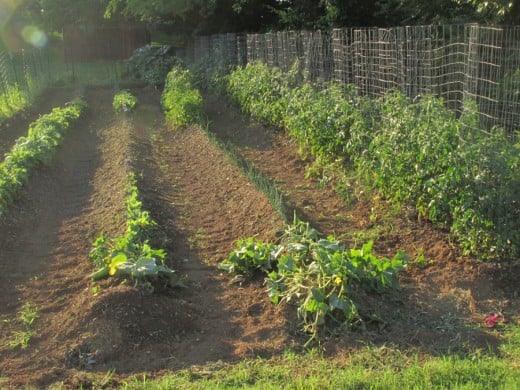
Herb Garden
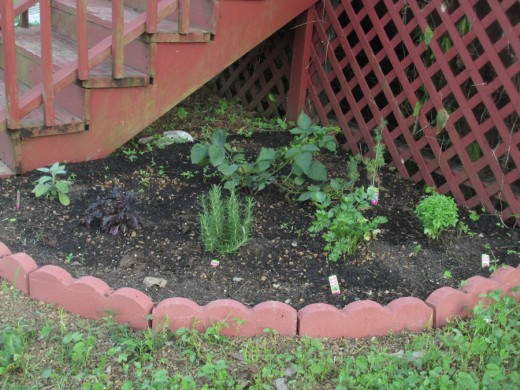
Herb garden
This is the first year I have had a Herb Garden and this has been a work-in-progress as It is a combination of bringing an aesthetically pleasing look to my back porch area, while learning what herbs grow best in what conditions and sunlight.
I have used a variety of plants because some have died but it looks now that I have found the right ones for the conditions. Initially this is where I planted two blackberry plants on either side of my steps leading up to my back proch but since it will take a couple years for these plants to mature, I decided to fill up the empty space with some herbs and learn how they grow.
Remember, Gardening, Is A Way Of Life but in the beginning it is a learning experience and so one must be willing to grow with from our mistakes. If we see this experience as tool for our spiritual growth we can recognize how mistakes from lack of preparation, research and not accepting guidance from other's or even intuition can prevent us from taking the correct action.
I used to visit and revisit it a dozen times a day, and stand in deep contemplation over my vegetable progeny with a love that nobody could share or conceive of who had never taken part in the process of creation. It was one of the most bewitching sights in the world to observe a hill of beans thrusting aside the soil, or a rose of early peas just peeping forth sufficiently to trace a line of delicate green.
— ~Nathaniel Hawthorne, Mosses from and Old ManseRusset Potatoes & Beans
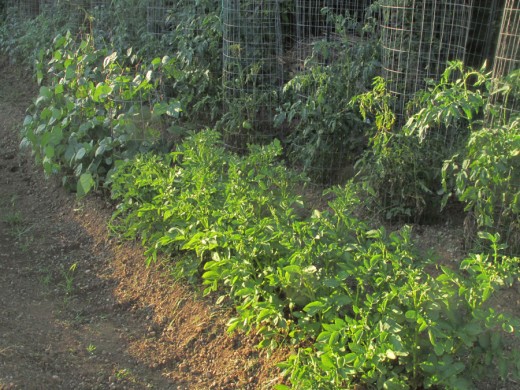
Nibs

A Way Of Life
To me Gardening, is A Way Of Life because so much of my daily routine is invested in it, even in the off months. When 75 to 80 percent of all the food you consume comes directly as result of the labor you put into creating and maintaining a garden, then it becomes paramount to your way of life to plan ahead.
For me Gardening, Is Way Of Life that allows me to get back to nature on a daily basis, helps the environment, creates a natural food supply (that will last through the winter months) and is incredibly enriching and spiritual. You will be amazed how growing plants adds to your overall Karma and brings pleasure to life.
I have never had a problem with critters in my garden eating my hard work but of course Nibs the cat loves to sleep there and generally hang out, so perhaps he keeps an eye on things when I'm gone.
Many people will use their crop to sell at a Farmer's Market or allow folks to come and pick what they want and pay for it that way by the pound. I have taken a different approach to this and simply give everything away to friends, neighbors and co-workers. My thinking is that it helps when we teach through example by giving unconditionally, it provides other's with healthy fresh vegetables to improve their overall health and that giving is its own reward.
Yes, it costs me money to grow my garden every year but I would rather give someone garden fresh vegetables than a twenty dollar bill, as I abhor the concept of money. No man owns this Earth we live on and if everyone learned to give to each other, no one would go without. This is my way of contributing to the overall expression of unconditional love and giving.
I hope everyone has enjoyed reading this article as much as I enjoyed writing it and try to remember for me it isn't work, Gardening, It's A Way Of Life!
Man's Nature, God's Art
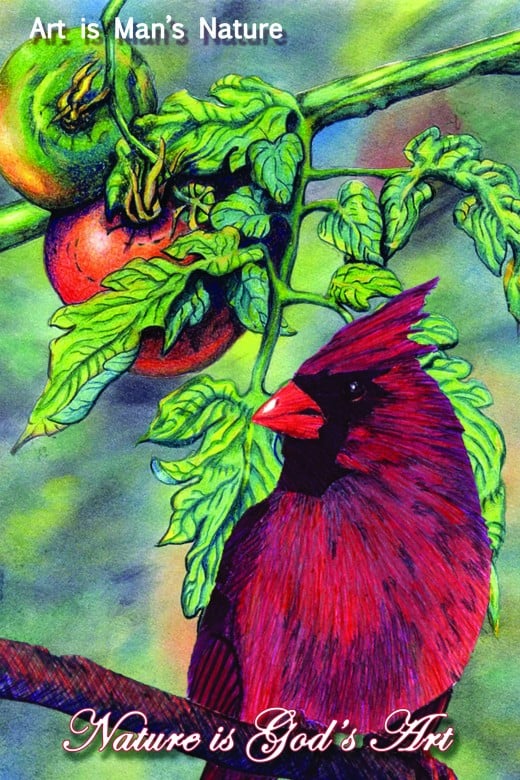
© 2016 somethgblue

